Cycling is a challenging sport that requires both physical strength and good nutrition. Staying hydrated is very important for cyclists, whether you’re new to biking or have been riding for years.
In this article, we will discuss why hydration is important and provide you with easy tips to stay hydrated on your bike rides.
Why Hydration is Important
How Hydration Affects Your Cycling
Hydration is key to cycling well. When you ride, you sweat and lose fluids. This can make you tired and slow you down. Dehydration can make your heart work harder and reduce the oxygen going to your muscles.
This can make you feel weak and less focused. Staying hydrated also helps keep your body cool. When you ride, especially in hot weather, your body sweats to cool down. Without enough water, your body can overheat, which can be dangerous.
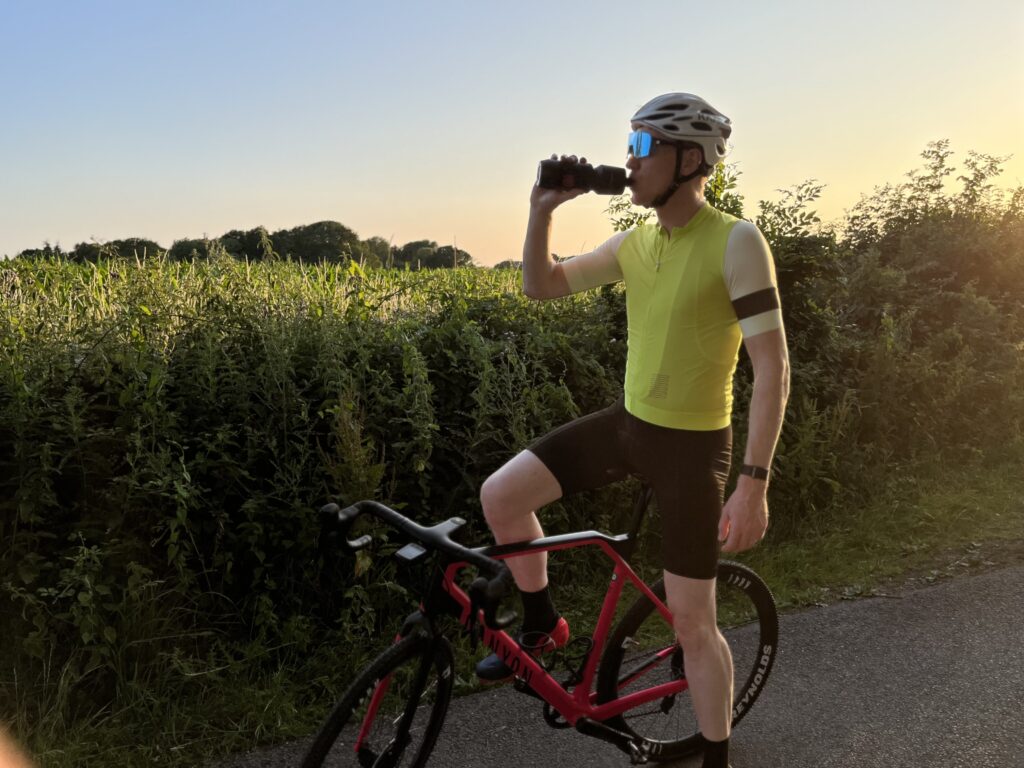
Signs of Dehydration
Knowing the signs of dehydration is important. Early signs include dry mouth, feeling thirsty, and dark yellow urine. If it gets worse, you might feel dizzy, have a headache, or experience muscle cramps.
Severe dehydration can cause confusion and even fainting. To avoid these problems, keep an eye on your hydration levels before, during, and after your rides. Listen to your body and drink water regularly.
The Science of Hydration
When you exercise, you lose not only water but also important minerals called electrolytes. These include sodium, potassium, and magnesium. They help keep your body balanced and your muscles working well.
To replace these lost electrolytes, you can drink sports drinks or use electrolyte tablets. These products help you stay hydrated and perform better.
How to Hydrate Before Your Ride
Drinking Water Before You Ride
Start hydrating before you even get on your bike. Drink at least 500-750 ml of water a few hours before your ride. This ensures your body is ready for the workout.
Also, eat a small meal with carbs, proteins, and healthy fats. This provides you with the energy you need. Avoid too much caffeine and alcohol, as they can dehydrate you.
The Role of Electrolytes
Electrolytes are important for staying hydrated. Before your ride, you can have a snack or drink rich in electrolytes. Foods like bananas, oranges, and yoghurt are good choices.
If you prefer, you can use electrolyte tablets or powders mixed with water. These are easy to use and help keep your electrolyte levels balanced.
Hydration and Weather
Weather affects how much you need to drink. In hot weather, you sweat more and need more fluids. In cold weather, you might not feel as thirsty, but you still lose fluids.
Adjust your hydration based on the weather. In hot conditions, drink more and consider using a hydration pack. In cold weather, remind yourself to drink regularly.
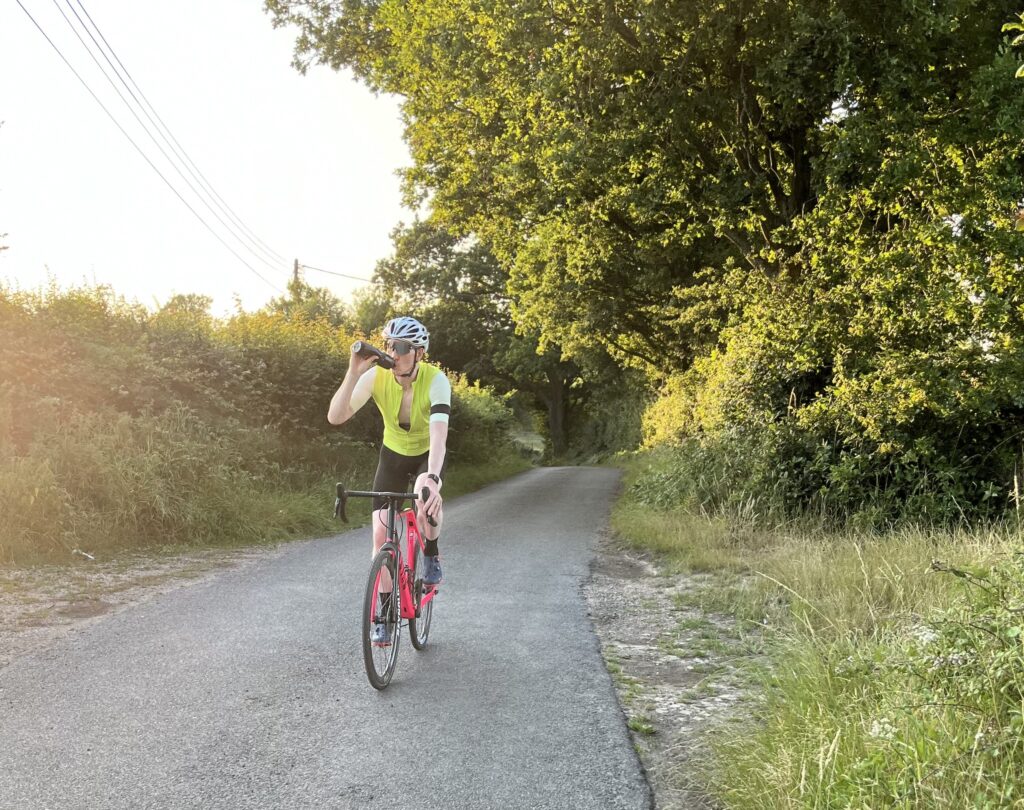
How to Hydrate During Your Ride
How Much to Drink
How much you need to drink depends on how hard and how long you ride, and the weather. A good rule is to drink 500-1000 ml of fluids per hour. Listen to your body and adjust as needed.
One way to check your hydration is to weigh yourself before and after your ride. For every kilogram lost, drink 1.5 litres of fluids to rehydrate.
Choosing Hydration Products
There are many hydration products, like water bottles and hydration packs. Choose what works best for you. For short rides, a water bottle might be enough. For longer rides, a hydration pack can be more convenient.
Besides water, consider sports drinks or electrolyte solutions. These help you stay hydrated and keep your energy up. Try different products to see what you like best.
Taking Hydration Breaks
Take regular breaks to drink, especially on long rides. Plan your route to include stops where you can refill your water. Use a timer or cycling computer to remind yourself to drink, even if you don’t feel thirsty.
During intense rides, take small, frequent sips instead of big gulps. This helps keep a steady flow of fluids and prevents stomach issues.
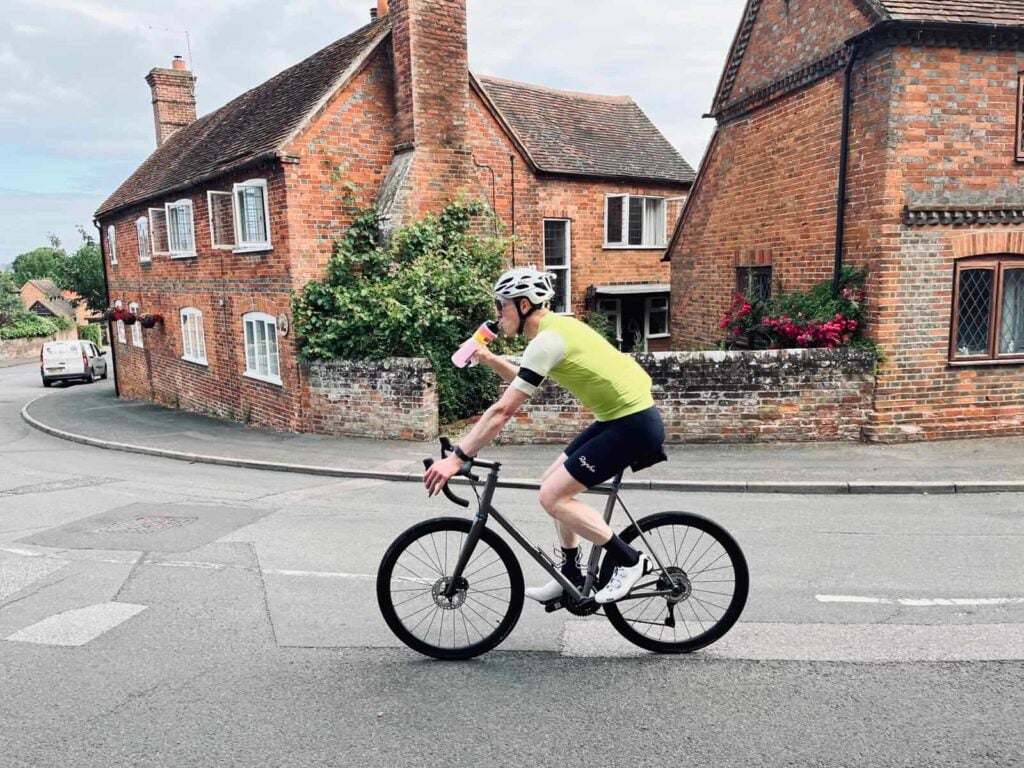
How to Hydrate After Your Ride
Rehydrating After Your Ride
Rehydration doesn’t stop when you finish your ride. Drink at least 1.5 liters of fluids for every kilogram lost during your ride. This helps you recover and prevents dehydration.
Consider a recovery drink with electrolytes and carbs. These drinks help restore energy and repair muscles.
Eating for Recovery
Hydration and nutrition go together for recovery. After your ride, eat a balanced meal with carbs, proteins, and healthy fats. This helps replenish energy and repair muscles.
Foods like lean meats, whole grains, fruits, and vegetables are great choices. Also, include foods rich in antioxidants, like berries and nuts, to reduce inflammation.
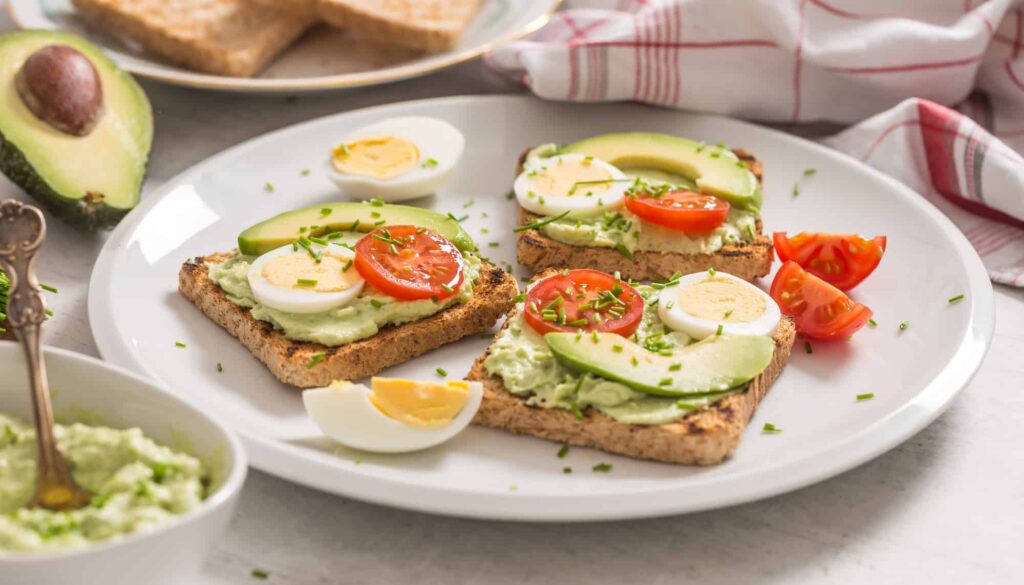
Checking Your Hydration
Keep an eye on your hydration status. Check your urine color and frequency. Clear or light yellow urine means you’re well-hydrated. Dark yellow or amber urine means you need more fluids.
Track your fluid intake and adjust as needed. Over time, you’ll learn what your body needs.
Advanced Hydration Tips
Hydration for Long Rides
Long rides need special hydration plans. Plan ahead, considering your route, weather, and available resources. Carry extra fluids and electrolyte supplements.
Balance fluid intake with food. Energy gels, bars, or snacks with electrolytes can help. Practice your hydration plan during training rides to find what works best.
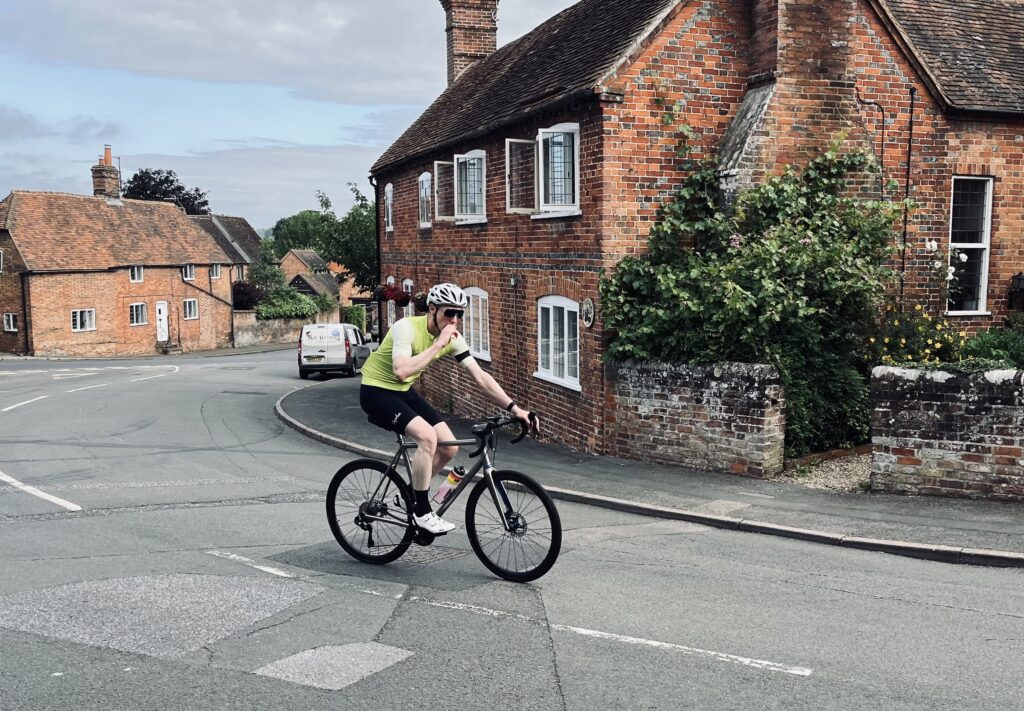
Hydration at High Altitudes
Cycling at high altitudes can increase fluid loss. Drink more and use electrolyte supplements. Watch for signs of altitude sickness, like headache and dizziness, and stay hydrated.
Hydration Gadgets
New technology offers various hydration gadgets. Smart water bottles, hydration vests, and cycling computers with reminders can help. These tools can keep you on track with your hydration needs.
Try different gadgets to see what works for you. Remember, technology is a tool to help, but always listen to your body.
Conclusion
Staying hydrated on your bike is important and requires careful planning. By understanding hydration, using effective strategies, and staying informed, you can improve your cycling performance and enjoy your rides more.
Remember, hydration is not just about drinking water; it’s about balancing fluids and electrolytes. Happy cycling!
